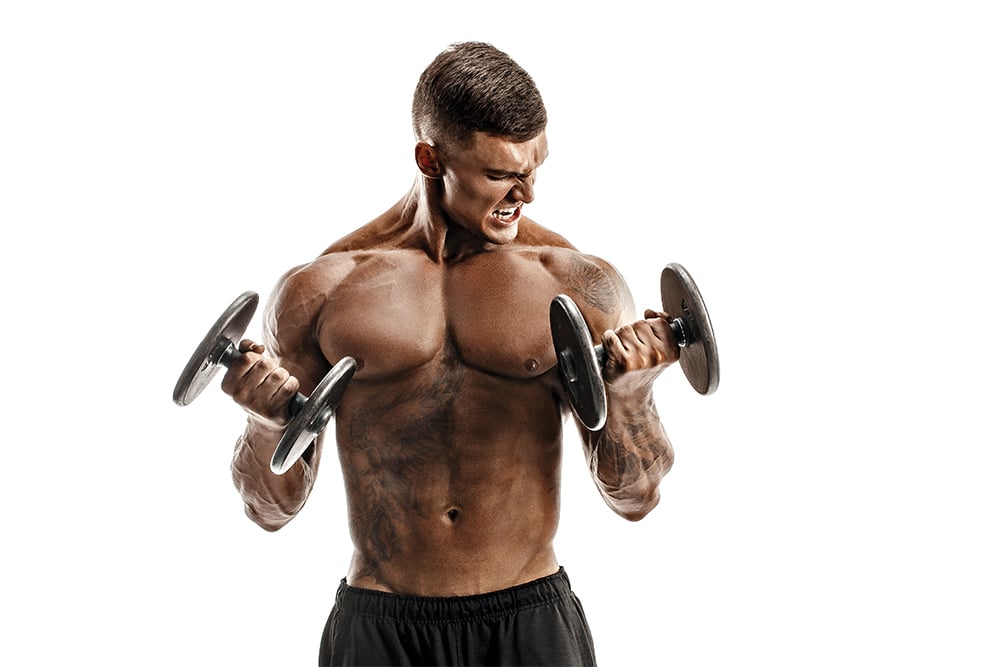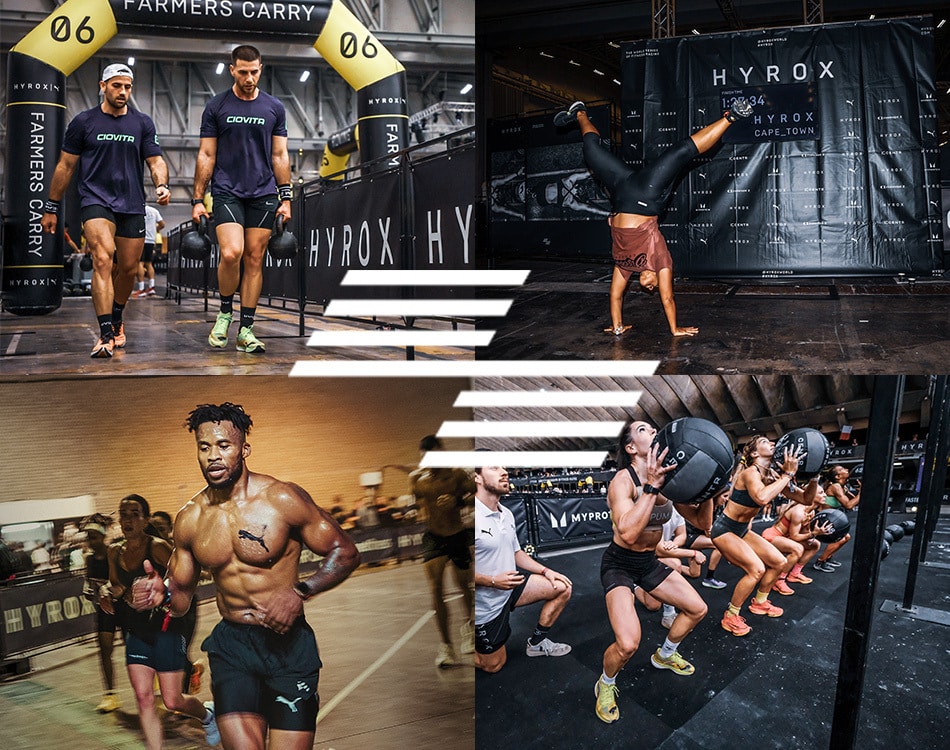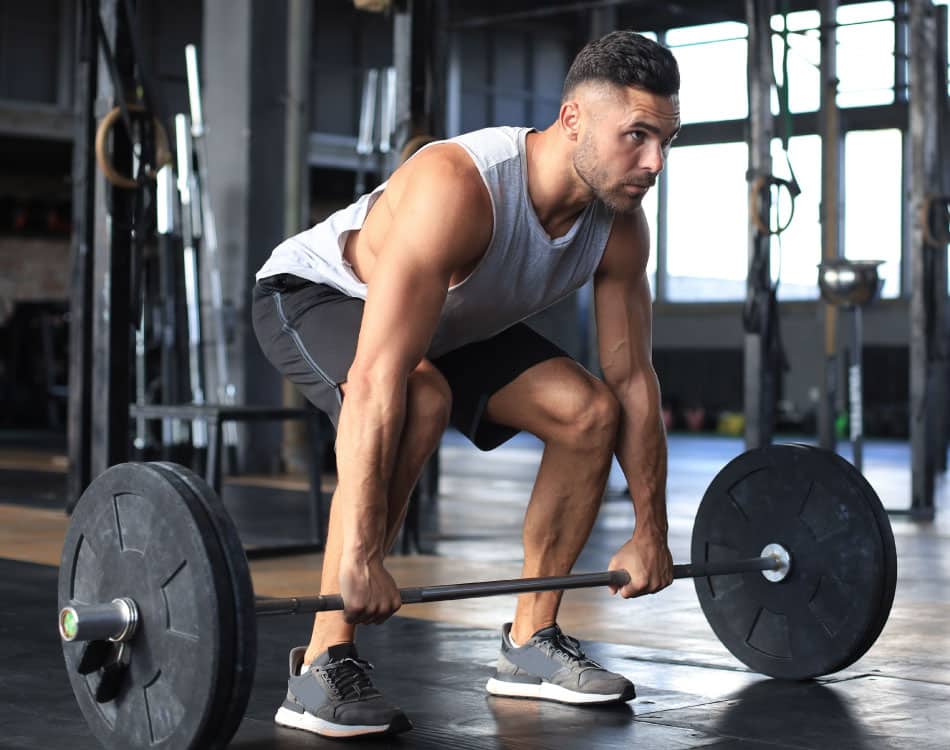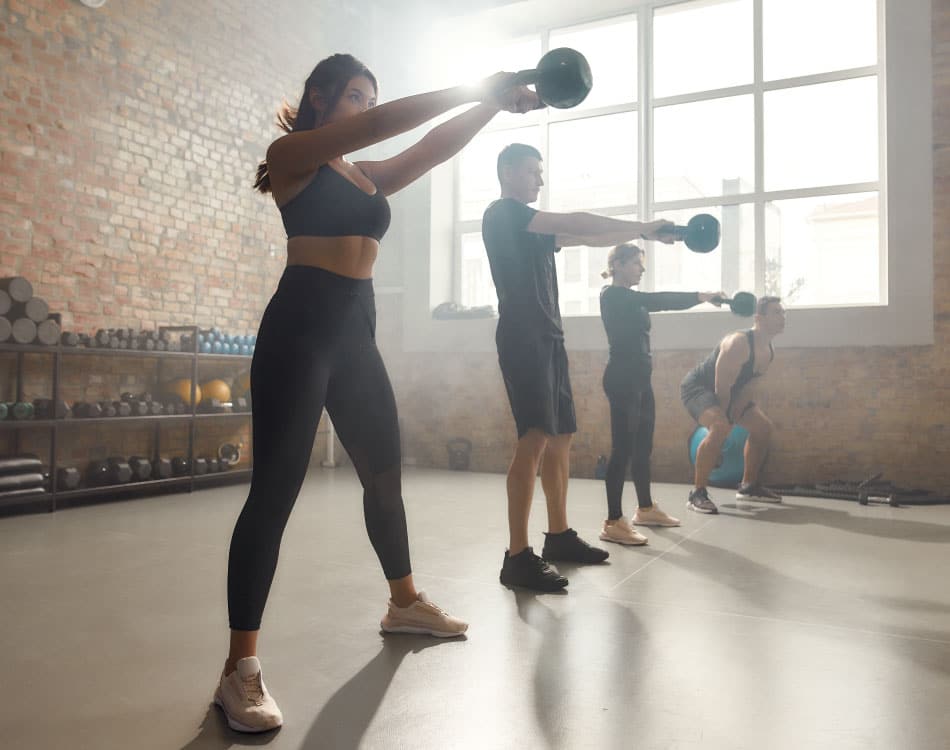A stronger bodybuilder is generally a bigger bodybuilder. The ability to lift more weight stimulates a greater anabolic (muscle-building) response, when you follow the correct nutrition, supplementation and recovery techniques, of course.
Here are 10 ways to increase your lifting capacity, which will help you build more muscle.
1. Warm up properly
Warming up properly is essential. It limits the likelihood of injury under heavy load and also improves your strength during the training session that follows.
A 10-minute warm-up that consists of light aerobic activity, dynamic stretching, mobility work and activation drills helps to increase blood flow to muscles and activates the neuromuscular system, which delivers increased strength when it comes time to lift.
Avoid static stretching, though. Research confirms that it negatively influences muscle strength and power output in subsequent workouts. This was illustrated in a 2012 study published in the Journal of Strength & Conditioning Research where researchers found that the dynamic warm-up “significantly improved eccentric quadriceps strength and hamstring flexibility”.
READ MORE | Optimise your performance through improved mobility
2. Hydrate properly
Most of us are dehydrated because we don’t drink sufficient water throughout the day (2-3 litres a day on average). This has detrimental effects on our strength and impacts muscle contractions.
A study conducted at the University of Connecticut and published in 2007 in Medicine & Science in Sports & Exercise, determined that “hypohydration (decrease in water volume in the body) attenuates resistance exercise performance”, particularly in subsequent sets..
READ MORE | Don’t water down your performance: Optimise hydration with these supplements
3. Get a pre-workout boost
Pre-workout supplements are specifically formulated to give you a boost before a tough session. The right product with the right combination of ingredients can increase energy and boost strength.
Most pre-workouts dilate blood vessels, which allows more blood to reach working muscles with nutrients that fuel contractions and support repair and recovery.
Many pre-workouts also contain stimulants such as caffeine, which has been shown to provide strength benefits when used in the correct dosage.
According to researchers at Yale University, caffeine can also improve strength endurance and our perception and tolerance to fatigue during training.
READ MORE | The low-down on pre-workouts: Drink up, power up & demolish that session
4. Supplement with creatine
Creatine plays an important role in our primary energy system, the Adenosine Triphosphate-Phosphocreatine (ATP-PCr) system. This is the most essential energy pathway for strength and power generation.
Creatine is mainly stored in skeletal muscle cells to supply a readily available source to power the short duration, intense muscle contractions associated with weight lifting.
However, there is a finite amount of diet-derived creatine that the body can store. When we deplete these reserves, we lose the ability to sustain these intense muscle contractions.
It is at this stage of the process where creatine supplementation delivers its value by providing additional supplies.
READ MORE | Study shows creatine fuels and protects muscle
5. Think strong
Visualisation and mental imagery are powerful yet often underutilised tools in the gym, particularly where strength is concerned.
For instance, a study by researchers from Cleveland Clinic Foundation in Ohio, compared “people who went to the gym with people who carried out virtual workouts in their heads”.
Those who went to the gym experienced a 30% increase in strength, while the group that did the virtual weight training sessions were able to increase bicep muscle strength by 13.4%, and they sustained those gains for three months following the mental training.
Researchers suggest that these strength gains were due to improvements in the brain’s ability to signal muscle activity.
6. Go minimalist
Minimalist footwear enhances proprioception, which helps to control our movement and improve balance. With the enhanced postural coordination and alignment, joint alignment and balance that minimalist footwear promotes we have better control and coordination of our movement.
This allows us to generate more force through our planted feet and allows us to maintain the correct, natural position of our body during complex compound movements, which makes us more efficient.
READ MORE | We reveal why training in minimalist shoes can be good for gainz
7. Get a grip
Grip strength is a rate-limiting factor on any lift where you need to hold the bar. Accordingly, developing your grip strength specifically, learning different grip techniques for heavier lifts and using lifting aids when necessary, can help you lift more.
And much like your feet, your hands are also important proprioceptive tools. All the mechanoreceptors in our hands help to guide and control the movement of our arms and proximal muscles, and they also engage the nervous system.
In fact, merely gripping a bar more tightly will activate more muscle in the shoulders as the body prepares to manage the impending load.
8. Develop a functional core
Your core is where you generate your power, which is then transferred to your extremities. A weak core also means that other muscles need to compensate by performing stabilising functions, even if that isn’t what they were designed to do.
This creates weakness and inefficient movement patterns, which reduce strength. Research also shows that core activation before a compound lift can help to increase force production.
Bodybuilders can benefit from this approach, as their approach to ab training is often disproportionately focused on trunk flexion, not stabilisation.
READ MORE | Why it’s time to shift your training priorities
9. Master your technique
Strength and efficiency of movement are closely interrelated. When you use the incorrect technique, you start to ‘leak’ strength as you shift the force off of the primary movers and on to smaller accessory muscles, which is hugely inefficient.
You, therefore, accelerate time to exhaustion and are largely unable to generate the same amount of force that you would with strict form.
Accordingly, developing technique, form and correct movement patterns should precede strength development.
However, if you already have this base, then fine-tuning your form and technique can help to incrementally improve your strength, allowing you to lift more for longer, thereby building more muscle.
READ MORE | Fix your form to squat heavy
10. Take longer rests between sets
ATP – the primary fuel source used for intense muscle contractions – requires a certain amount of time to replenish itself after a set or interval. To be more specific, the ATP-PCr system takes at least three minutes to fully recover (convert ADP back into usable ATP).
Increasing the time you take between sets of extremely heavy lifts, to between 3-5 minutes, will ensure complete recovery can take place, which will ensure you can lift more, or push out those extra few reps during subsequent sets.
READ MORE | Is creatine the ultimate performance enhancer?

















